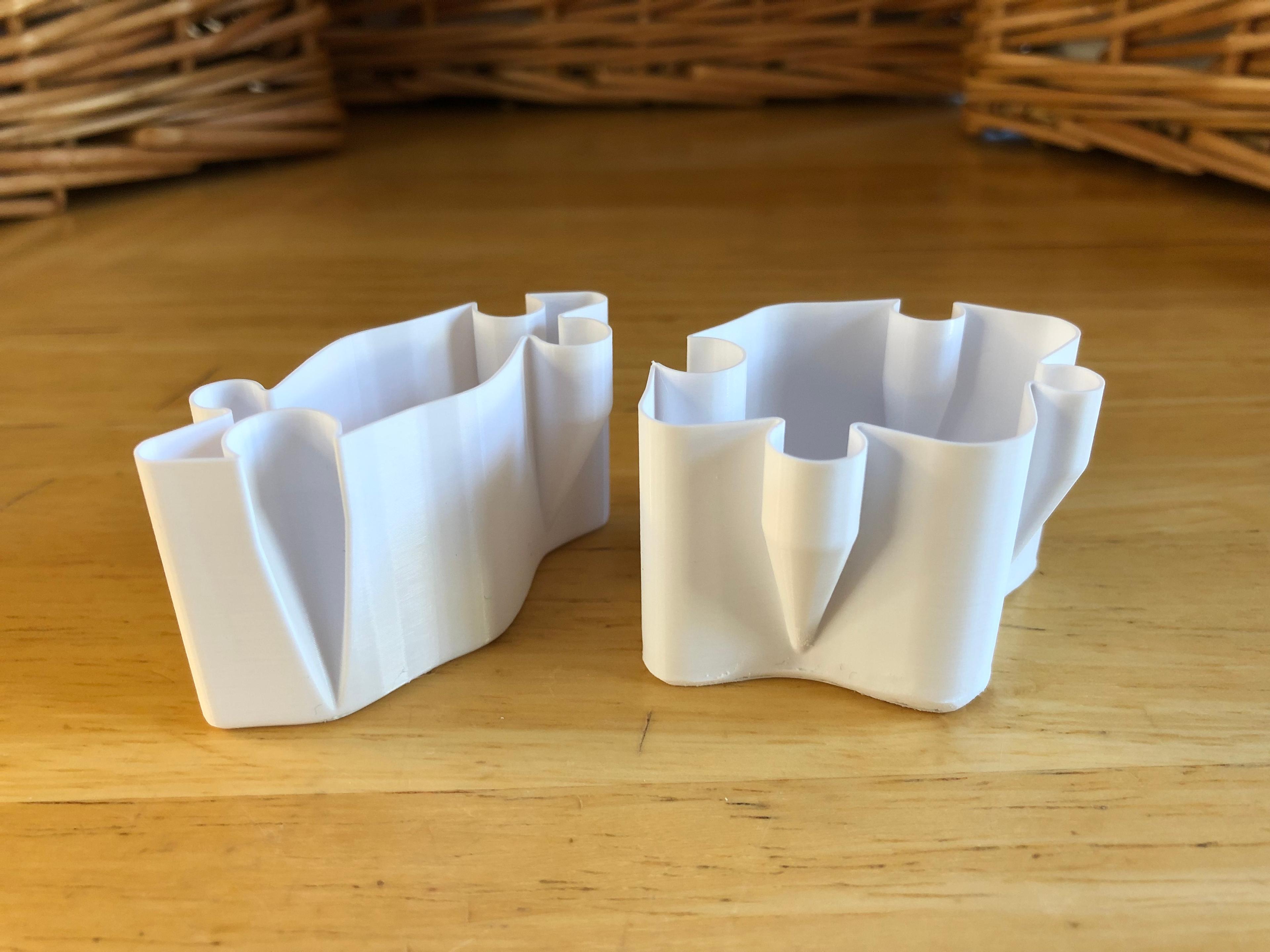Penrose P3 Pods
These snap-together “pods” are derived from the Penrose P3 aperiodic tiling system. The different-sized tabs impose “matching rules” on how they snap together, creating intriguing “random” or fivefold rotational symmetry patterns. See below for more design details.
See here for video: https://youtu.be/_eg1Zbz1M30
Print the files in “vase” or “spiralized” mode with a bottom. You’ll want to print approximately equal number of “Thick” and “Thin” pieces. The files will work with different nozzle sizes. Using a larger nozzle with result in stiffer walls and a tighter fit.
Mathematician and physicist Roger Penrose investigated aperiodic tiling systems in the 1970s. Aperiodic means that shifting any tiling with these shapes by any finite distance, without rotation, cannot produce the same tiling. However, despite their lack of translational symmetry, Penrose tilings may have both reflection symmetry and fivefold rotational symmetry as see in the photos.
This particular system of aperiodic tiling is known as “P3”. This system uses a pair of rhombuses with equal sides but different angles. The tiles in this system are often referred to as the “Thick Rhomb” and “Think Rhomb.” Ordinary rhombus-shaped tiles can be used to tile the plane periodically, so restrictions must be made on how tiles can be assembled. The matching rules distinguish sides of the tiles, and entail that tiles may be juxtaposed in certain particular ways but not in others.
If a set of pods don’t fit together, it means that the orientation is somehow violating the matching rules. Try rotating or swapping pods, and eventually you’ll find the pattern that works!



